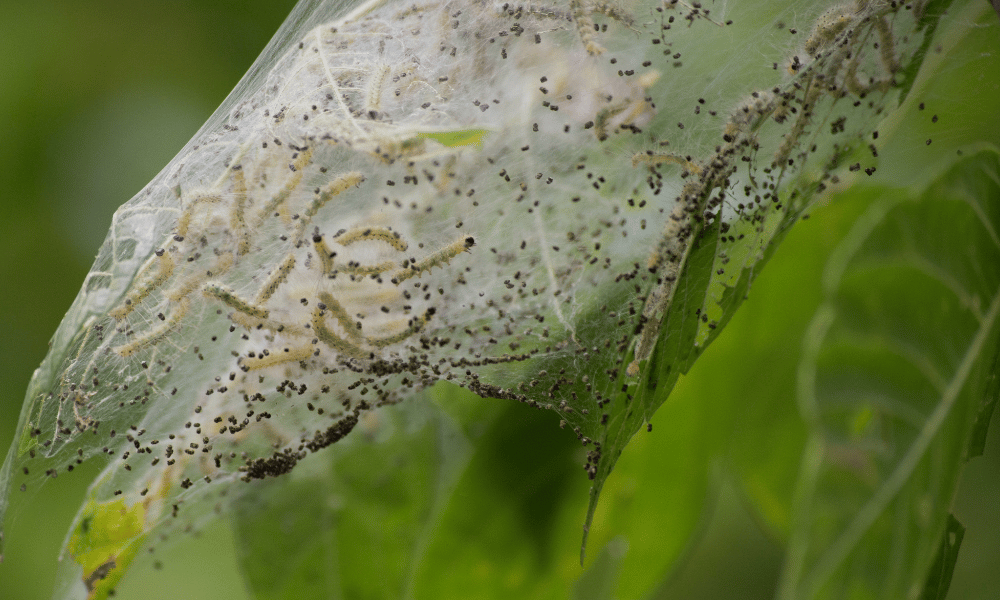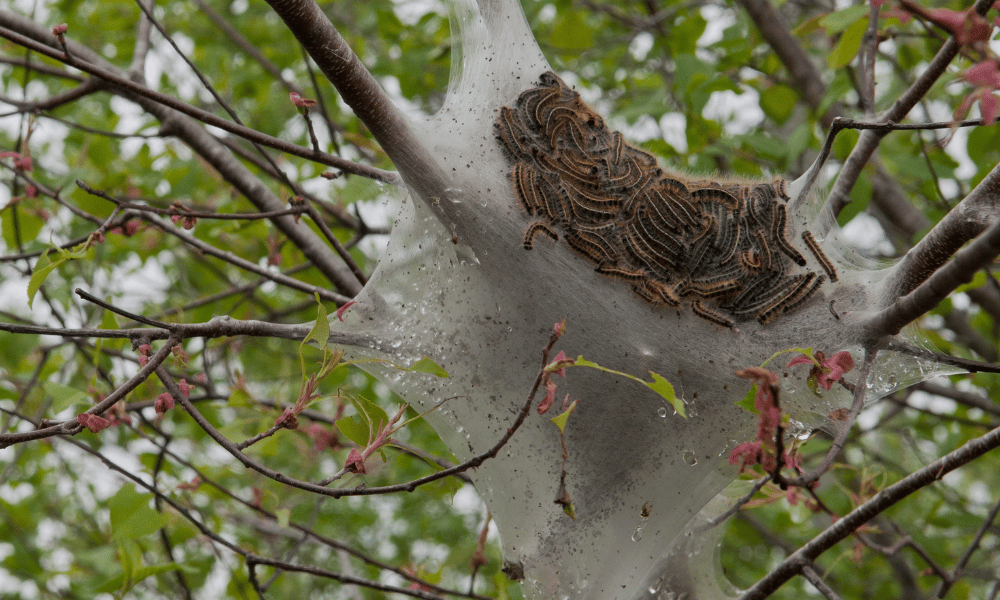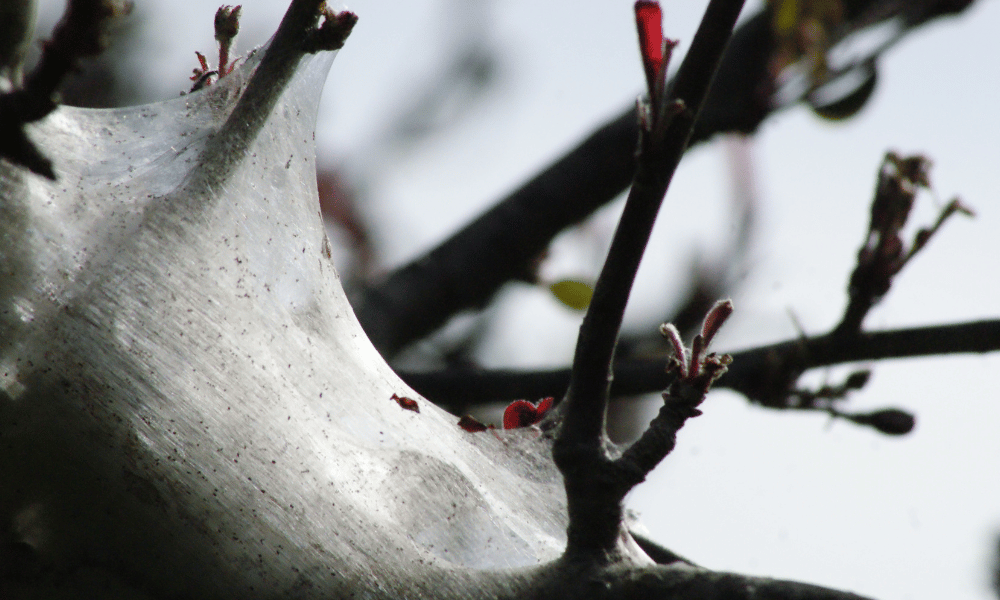Have you ever noticed white, silky webs in your tree branches? While your first instinct may be that there are massive spiders making a home in your backyard, the webs are actually home to caterpillars! But, do moths make webs?
No, moths do not make webs. The webs are created by caterpillars as they eat the leaves from the trees as a way to protect themselves from predators. Even though caterpillars will grow into moths one day, adult moths do not make webs.
What is a Moth Web?
When we think of webs, we almost always think of spiders. When spiders make webs, it is an adult who is spinning the web to make a home for itself as well as a place to lay eggs.
In the case of moth webs, the adult moths are not part of the web process. The web is created by caterpillars that will one day grow into moths.
What is a Moth Web Made From?
A moth web is a protective layer of silk spun by the caterpillars of fall webworms or tent moths.
Why Do Moths Make Webs?
These species of caterpillars make webs for protection and to help them easily move about the tree branches and find food to eat.
It can be hard for the small caterpillar to get around, especially when they nest at the tips of trees where the branches can be far apart. The web also provides a cover for them to cocoon safely without being disturbed by predators.
Which Moths Build Nests?
There are two types of moths that in their caterpillar stage, will create webs in your treetops. The fall webworm and the tent moth caterpillars can both enjoy the benefits of their webs.
Depending on the season, you will know which species you are dealing with:
Fall Webworms
The first part of their name tells you a lot about these caterpillars. They will build their webs in the fall! However, despite their name having the word “worm” in it, they are not worms at all.
Fall webworms are the caterpillar stage of the webworm moth, a furry white moth that will sometimes have black spots on it.
The caterpillars enjoy using the web as a safety net, protecting them from the outside world of predators. They tend to build these webs at the end of the branches where most of the leaves are situated.
They will remain in the web until they are ready to go into their cocoons.
These moths over winter in their cocoons and will search out a private place to make them. Usually, they will find crevices in the tree bark to spend their winters.
In the spring, the adult moths will emerge and look for mates. The female will then lay her eggs and once again the cycle will repeat itself.

Tent Moths
If you notice cotton webs in your trees during the spring season, you have tent moths.
Tent moths will overwinter in egg form, emerging when the warmth of spring allows them to hatch. They will then head to the crotches of trees and spin their webs. Tent moths will search for food during the day and return to their webs at night.
When they are ready to go into their cocoons, it will be midsummer.
Unlike the webworm moth that will overwinter in the cocoon and emerge in the spring, tent moths will find a place to cocoon during the summer, emerge as an adult and lay eggs before winter.
The new eggs will remain until spring and the cycle will start over!

Do Moth Webs Hurt the Trees?
While the webs can be unsightly, the good news is that neither the webs nor the caterpillars harm the trees.
Even though the caterpillars feed on the leaves of the tree, they leave the branches and structure alone.
The webs will fall apart themselves over the winter and in the spring, new leaves will emerge as if the caterpillars were never there.
Can You Remove Moth Webs?
Even though the webs and caterpillars don’t do any damage to the tree or its branches, the webs can be unsightly.
The good news is you can remove the web. It is best to remove it when it is first noticed. Once the caterpillars have become established, it will be hard to get rid of them all.
You can use a glove to remove the web of tent moth caterpillars. If the fall webworms have started a nest at the end of a branch, you can easily remove that part of the branch with little worry about harming the entire tree.
If you are not bothered by the web, it is best to leave it. Damaging and killing the caterpillars can negatively affect the population since they only mate once a season.
Summary
Although not technically a web, moth larvae of certain moth species will spin, what appears to be, a web that hangs in a tree. Fall webworms and tent moths are the two species most likely to produce a web in your tree.







